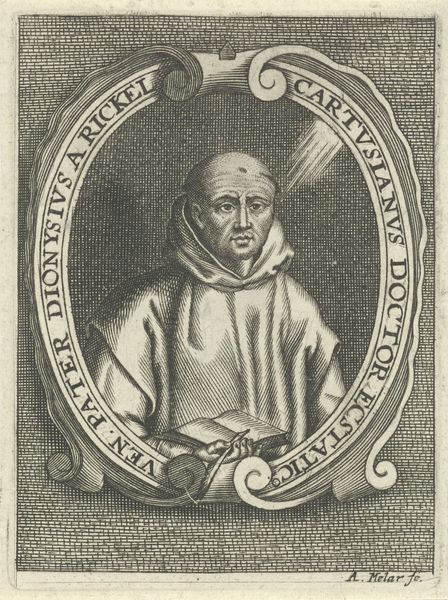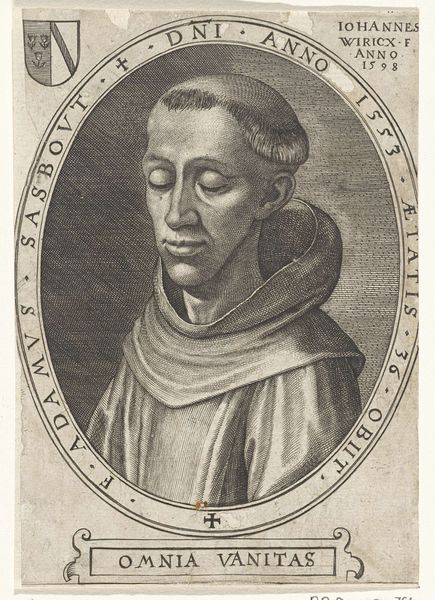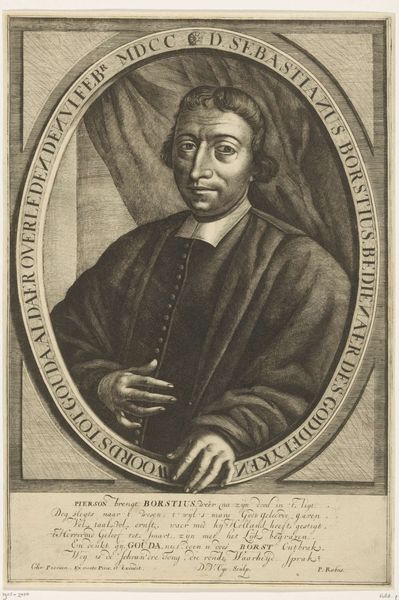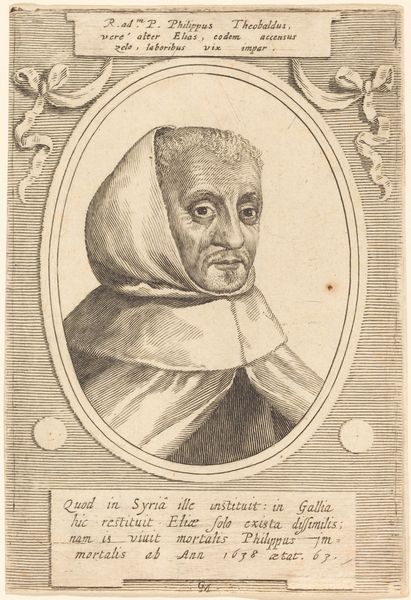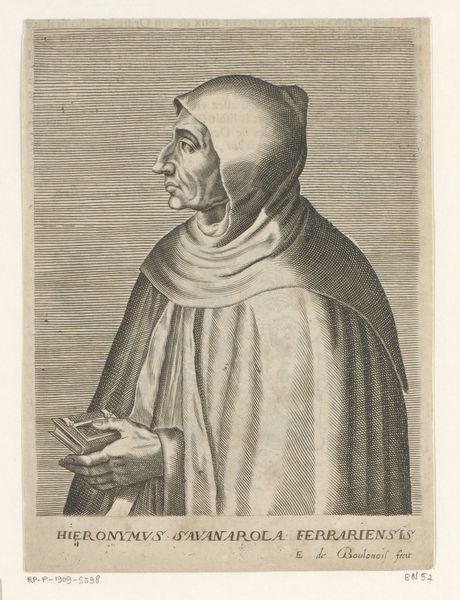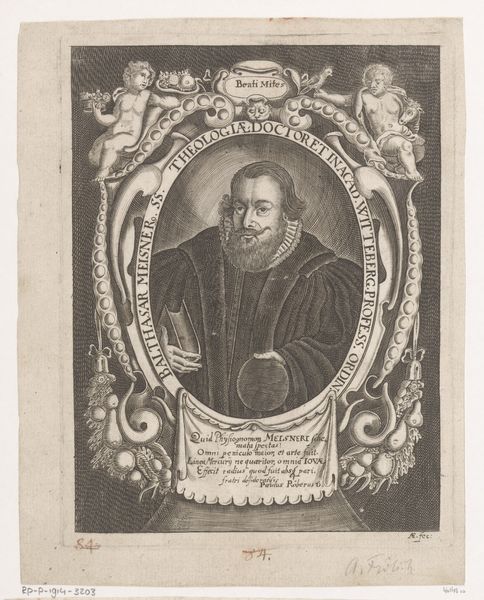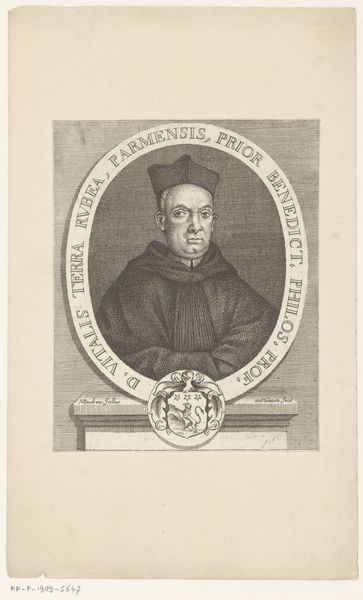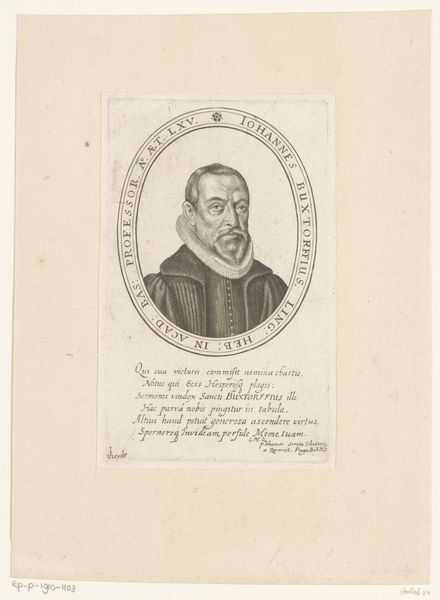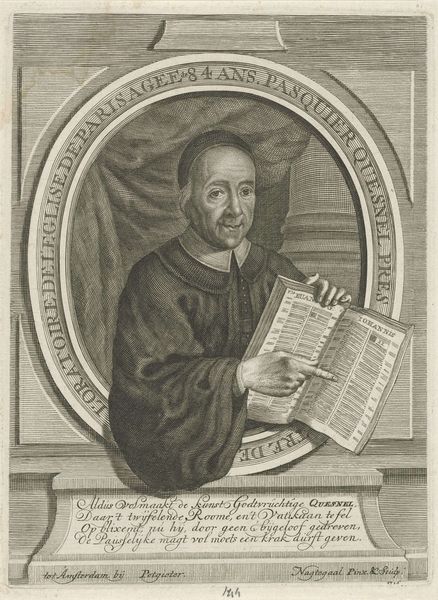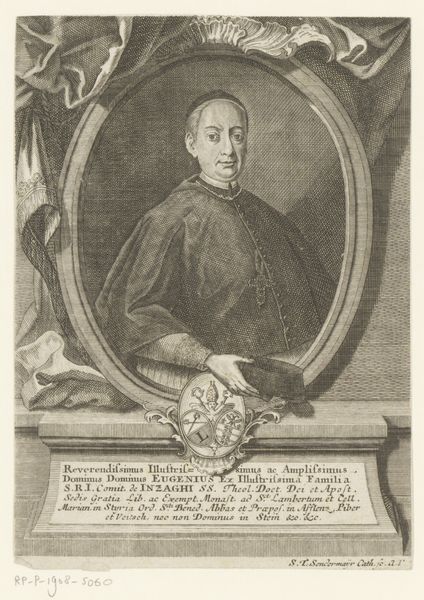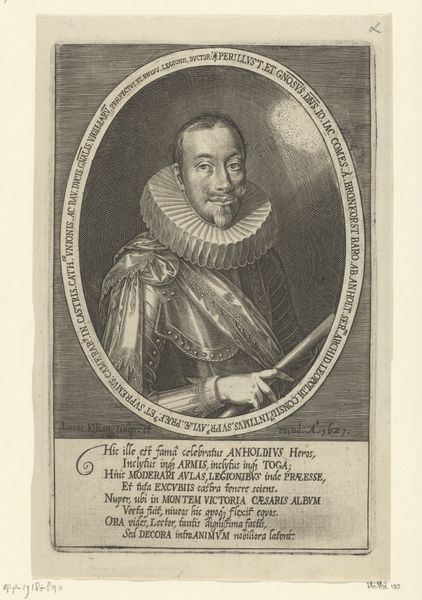
print, engraving
#
portrait
#
self-portrait
#
baroque
# print
#
old engraving style
#
momento-mori
#
history-painting
#
engraving
#
miniature
Dimensions: height 96 mm, width 78 mm
Copyright: Rijks Museum: Open Domain
Editor: We're looking at a print, "Portret van Adam Sasbout," created sometime between 1590 and 1633 by Boëtius Adamsz. Bolswert, housed at the Rijksmuseum. The man's eyes are closed. The inscription "Omnia Vanitas." sits above his head. There's a quiet solemnity about the piece. What stands out to you in this work? Curator: The "Omnia Vanitas" declaration certainly frames our understanding. "Vanity of all things" was a popular motif in the 16th and 17th centuries, wasn't it? Here it's interesting to think about how Bolswert employs it within a portrait. Is this an assertion about the sitter, Adam Sasbout, or about humanity more broadly? It seems to ask us: What does it mean to memorialize an individual while simultaneously declaring the fleeting nature of existence? Editor: It's like a visual memento mori, reminding us of death's inevitability even while preserving someone’s likeness. The Latin text further emphasizes the temporality of earthly existence. Do you think there's a particular socio-political angle here, given the historical context? Curator: Absolutely. Consider the religious and political turmoil of the period. The rise of Protestantism and the ongoing conflicts would have created a profound sense of uncertainty. Art served not just as a reflection of individual identity but as a commentary on these larger anxieties. How does Sasbout's closed eyes impact your reading of the print? Editor: The closed eyes! Perhaps he's meditating, withdrawn from the chaos of the world. Or maybe, in his withdrawal, he’s critiquing it. It gives a sense of inner reflection amidst external conflict, but also speaks to larger societal unrest. Curator: Exactly. And think about the act of portraiture itself. By fixing a likeness, are we defying or acknowledging mortality? This work invites us to question the very value we place on earthly fame and representation in times of upheaval. I now look at the piece with completely different eyes! Editor: Me too! I appreciate how situating the piece within its historical context unveils its multi-layered meaning.
Comments
No comments
Be the first to comment and join the conversation on the ultimate creative platform.
